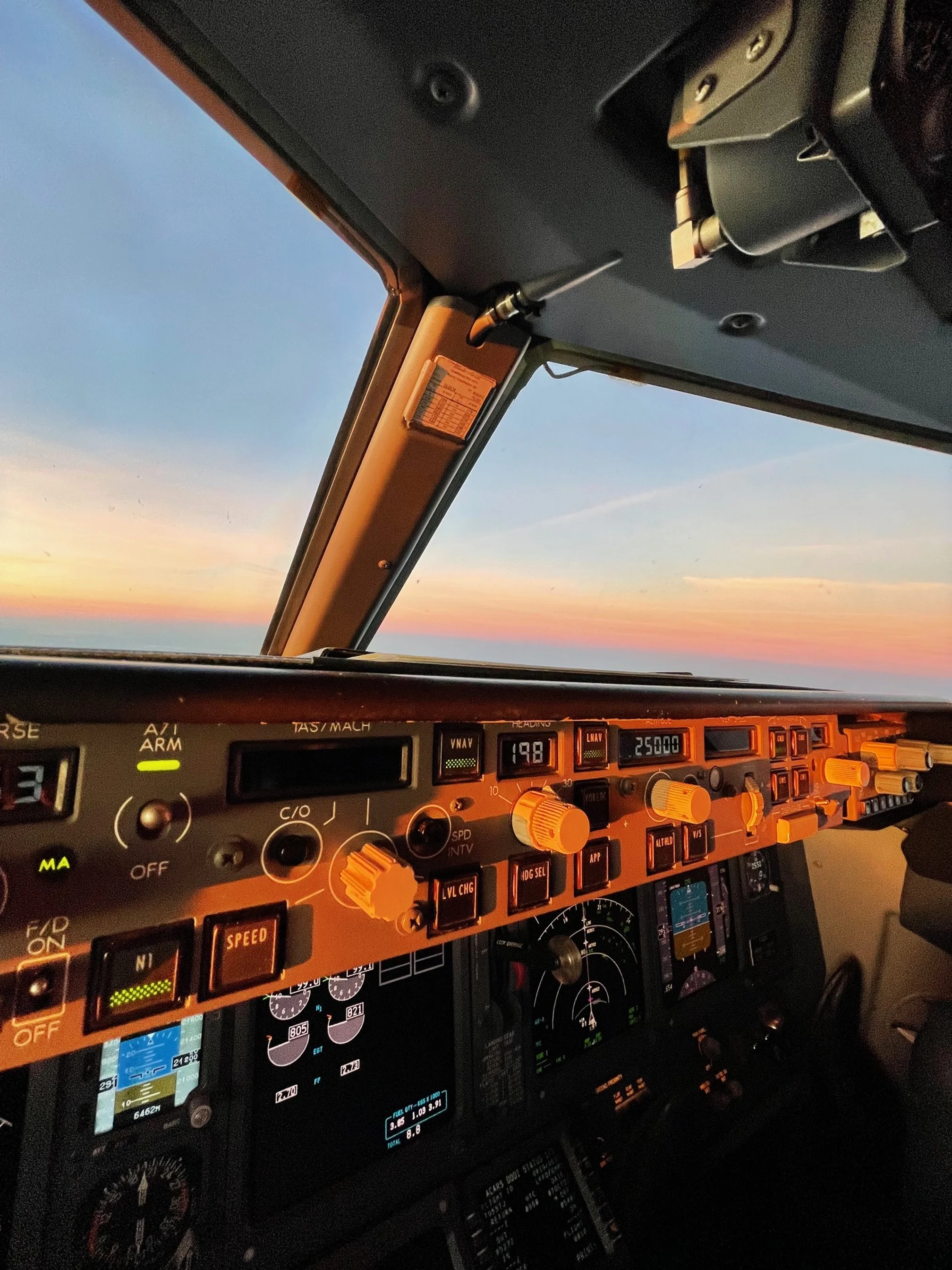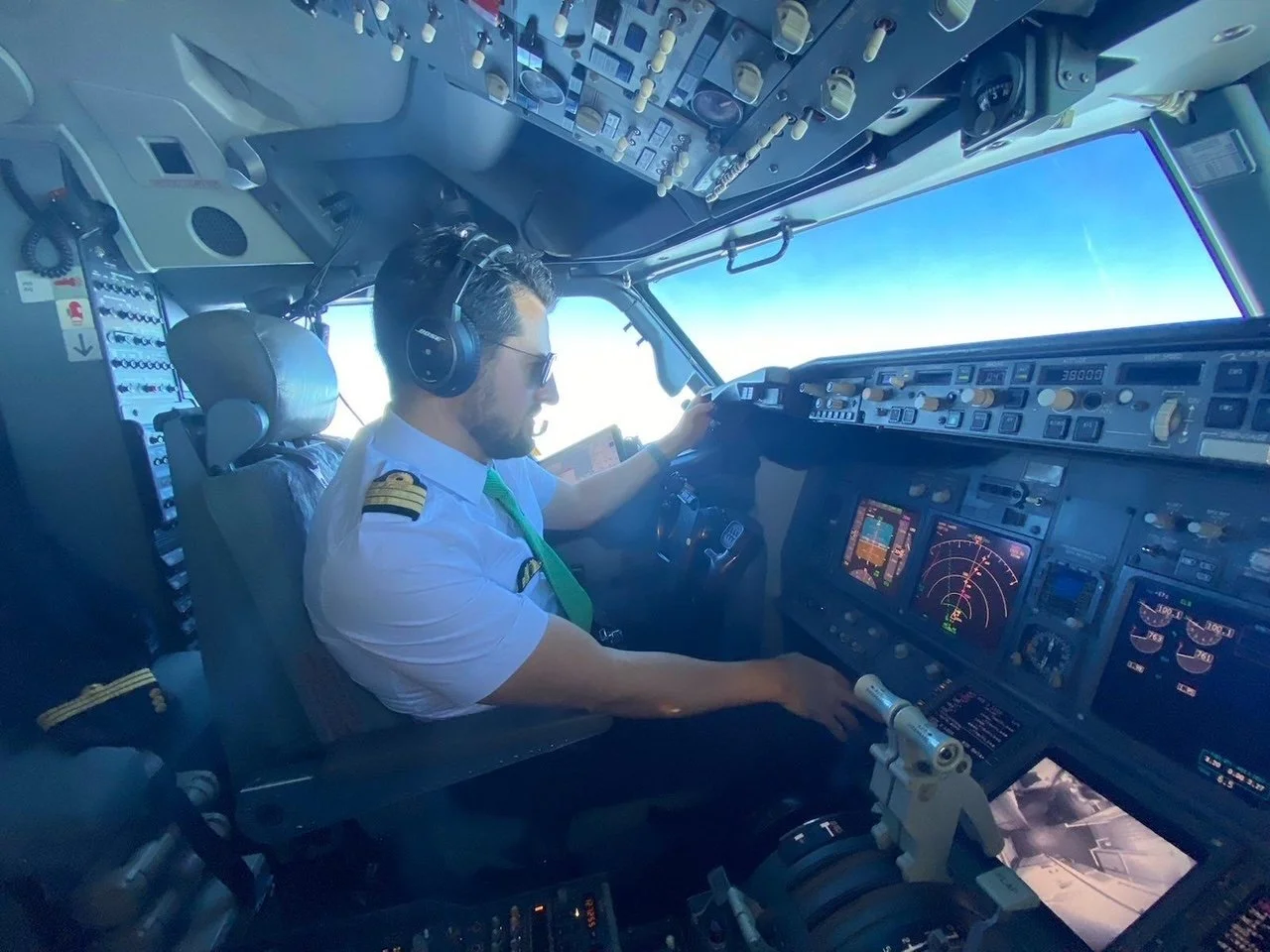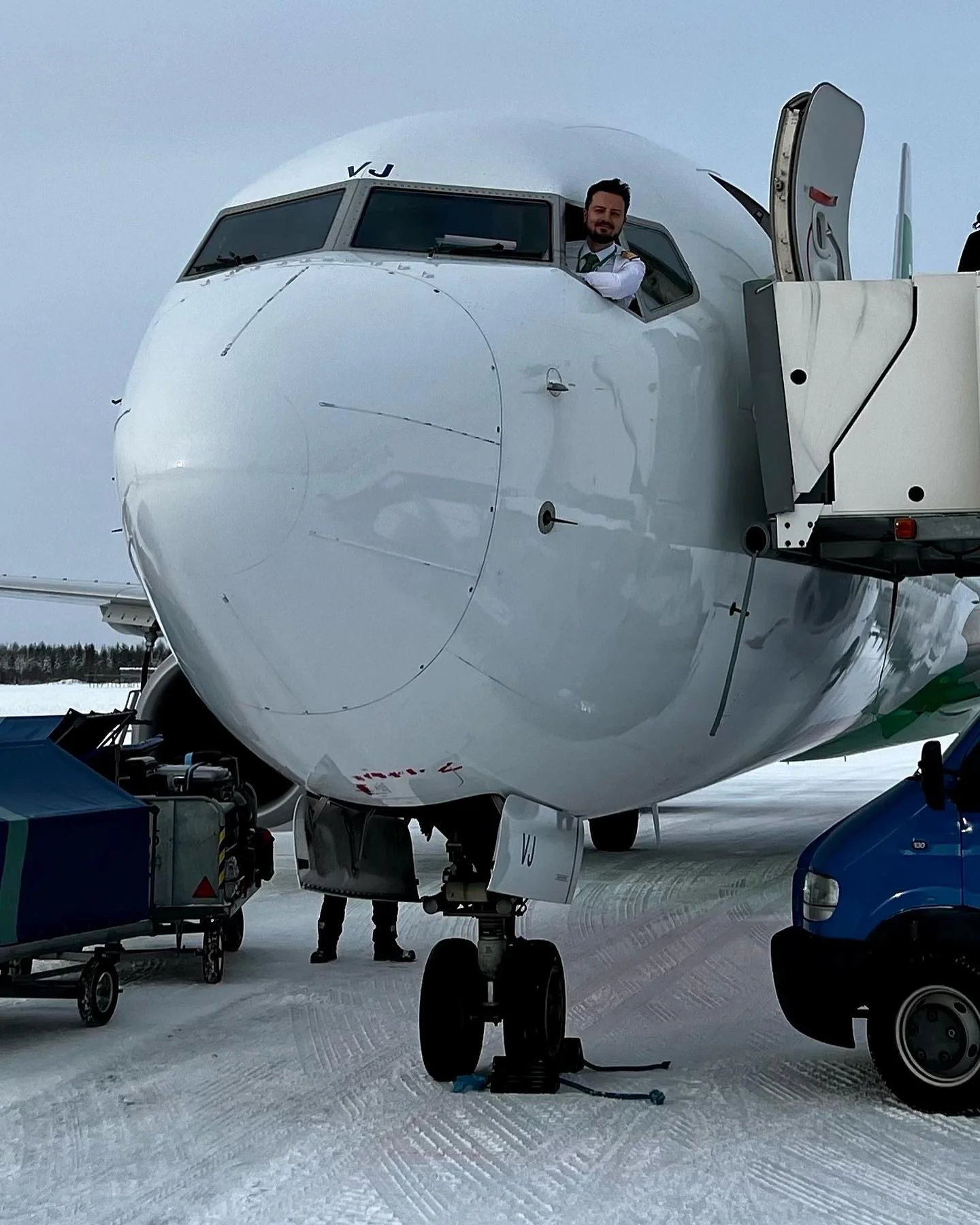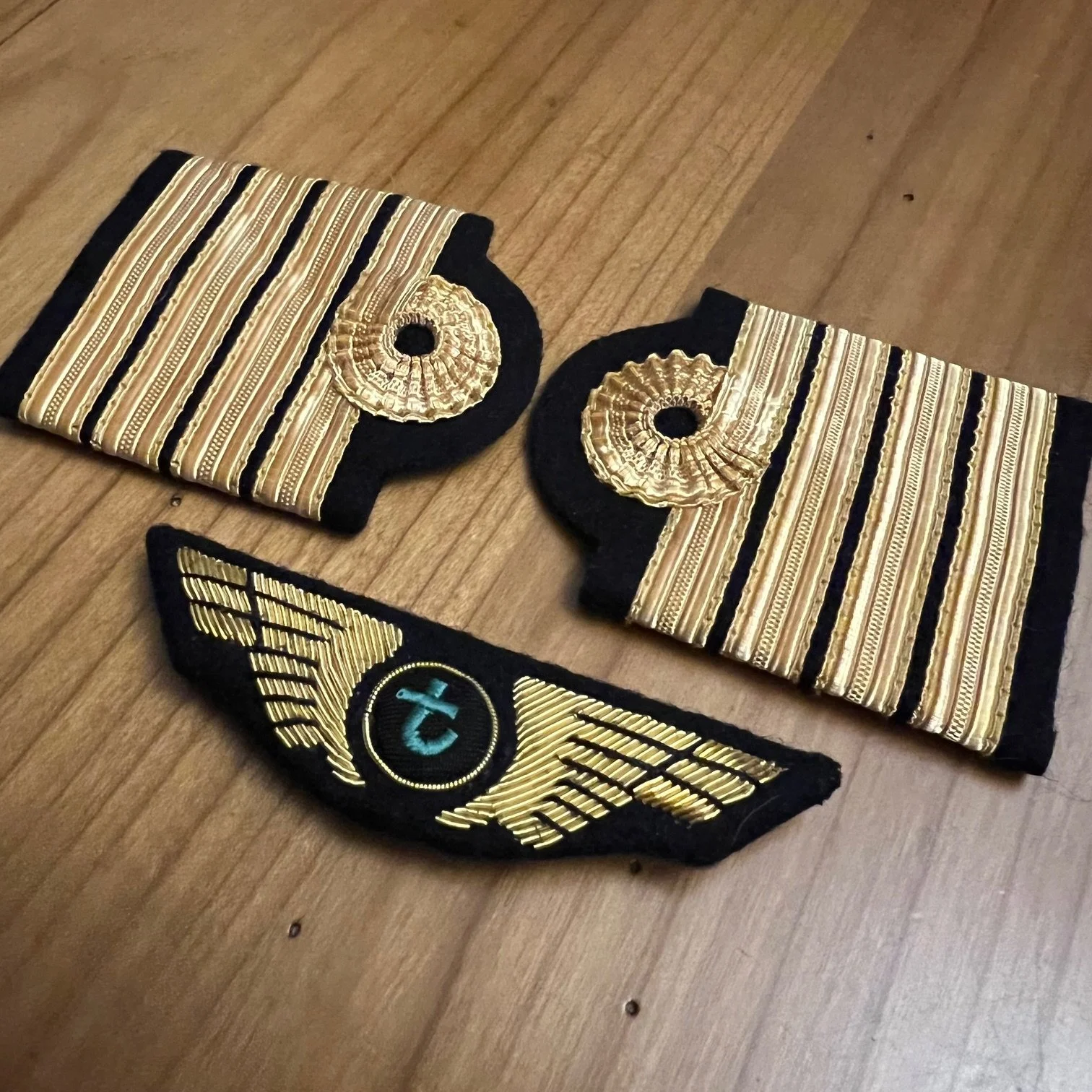The Captain training
From First Officer to Captain: My 737 Journey
After three years of initial training and thirteen years as a First Officer, I began Captain training.
It’s a milestone in a pilot’s career—an exhilarating mix of excitement and responsibility. I decided to share this demanding and fascinating journey, step by step.
From First Officer to Captain
We all start out as First Officers on short- and medium-haul aircraft: the A320, Boeing 737, A220… Progression comes with seniority, depending on retirements and new hires. Every move to a different aircraft requires a Type Rating—a course dedicated to mastering a single aircraft type (pilots are qualified on only one type at a time).
Four years ago, I transitioned from the A320 to the Boeing 777 with a new type rating, moving to long-haul operations. Today, a new challenge awaits: the captain’s seat, and for me, a new aircraft—the Boeing 737.
Captain Training: More Than Just Flying
The upgrade program is a rare opportunity to consolidate everything you’ve learned over the years, while developing new skills in leadership and decision-making. It begins in the simulator, on the aircraft you’re already flying.
The instructor sits in the control booth, free to create any failure they wish. Up front, we sweat it out, while the air vents blow as realistically as in the real aircraft.
The First Simulator Challenge
The training begins with a full-motion simulator session. The cockpit is recreated down to the smallest detail—every button, vibration, and sound exactly as in the real aircraft.
Scenario: heavy takeoff out of Hong Kong, low visibility, dense fog. At 10,000 feet, a major failure strikes—hydraulics, or an engine overheating to the point of shutdown.
This is where every pilot experiences the “Startle Effect”—a sudden shock that momentarily freezes your thinking. Stress surges.
The key? Return to the fundamentals:
Fly – Who is flying? Are speed, thrust, and altitude under control?
Navigate – Where are we heading? Which path keeps us safe?
Communicate – Contact ATC, inform crew and passengers.
Only then do the checklists, technical analysis, and decisions follow: diversion, troubleshooting, choosing the safest option.
At the end, the debrief sharpens us further. You leave humbled, but also closer to embodying the role you are preparing to assume.
Because being a captain isn’t only about handling failures. It’s about deciding. Communicating. Leading. It’s about carrying the weight of authority—ensuring safety, sometimes removing a disruptive passenger, guaranteeing the commercial mission: punctuality, comfort, reliability. When things go wrong, every eye turns to the captain.
Introspection and Responsibility
The second phase of training dives deeper: not only technical knowledge, but self-awareness. Courses in aviation law, flight safety, customer performance… and others less operational but just as vital: leadership, communication, self-confidence.
We were ten pilots in the program—half assigned to the Airbus A220, the other half to the Boeing 737.
Reopening the manuals suddenly felt different. We were no longer just First Officers—we were preparing to become the ones responsible: for passengers, crew, cargo, and the mission as a whole. Legal modules reminded us: the captain is the authority on board, empowered to take any decision necessary for safety, even ordering the removal of a person or cargo.
Every flight demands prioritization: confirming the pre-flight inspection is complete, signing the aircraft technical log, verifying safety equipment, oxygen, oil, fuel… not to mention weather and operational limits.
On paper: responsibility, authority, tasks.
In reality: the role where all eyes converge—whether in routine or in crisis.
Am I Ready?
With over 7,000 flight hours, I knew I had the technical foundation to learn a new aircraft. But was I ready—truly ready—to shoulder the role? Had I measured the full scope of responsibility?
What do passengers expect of their captain?
What would you expect, boarding your flight? An expert? A leader? Someone courageous, calm, human?
Leadership and Emotional Intelligence
To explore this, we spent two days on leadership and communication. Listening, questioning, emotional intelligence—concepts I’d heard of before, but which now became real tools.
In everyday life, a difficult decision allows time: consult, research, reflect. But at 900 km/h, time disappears. A captain must decide quickly—but without rushing.
Contrary to popular belief, pilots are not emotionless machines. The difference is, we train to recognize and manage our emotions.
Joy, fear, anger, sadness—these emotions don’t fit easily into a cockpit. What we develop is emotional intelligence: the blend of emotional and social skills that directly shapes our decisions.
Take a serious failure in cruise that forces a diversion:
Stress: It rises naturally—but can be channeled into useful energy.
Decision-making: Resist the urge to “do something now.” Check weather, runway lengths, options first.
Human relations: The crew must understand the situation; passengers must be reassured.
Expression: Both pilots must be able to voice their views—even if they disagree.
That is leadership: deciding, but with communication and cohesion.
The Grey Zones
We also studied complex past events—reminders that if every situation had a checklist, the job would be simple, and likely automated. The captain’s role begins where the checklist ends: in the grey zones.
There, experience, judgment, and personality make the difference. No two captains are the same; each brings their own way of managing a flight, an aircraft, an entire crew.
That is when you realize: the role is not just a function. It’s an incarnation. A moment to show who you truly are.
The first flights in the left seat, but still with three stripes.
The 737 Type Rating
Back to the simulator—the box we strangely love. A full month of sessions: cascading failures, complex scenarios, difficult weather, often all at once. Hydraulics, degraded flight controls, navigation losses—you name it.
After each session, another debrief. And another. Until the final check ride, the moment the examiner stamps your license with the words: Boeing 737. One more aircraft mastered.
The Captain’s Sim Sessions
Six four-hour sessions designed to push us to the edge. Cold-weather ops with heavy icing. Engine failures—always at the worst possible time. Tricky airports. Questionable ATC clearances. Passengers ignoring instructions. Ground evacuations. Ditching drills. Fuel margins barely enough for a diversion.
Dozens of Mayday calls later, we faced the ultimate check—the one that validates you as Captain, before ever taking the seat for real.
From the 777 to the 737
My ex (the 777) showed up at my first date with the 737.
That’s what it feels like, moving from a massive, deliberate long-haul aircraft to a nimble, high-tempo narrowbody where everything comes at you faster.
First Flights – The Line Training
Then comes the big moment: back in the real aircraft, sitting in the left seat at last. On the right, an instructor. Behind us, 189 passengers who have no idea they’re part of the show.
Yes—you’ve probably flown with pilots in training without realizing it. Rest assured: we already know how to fly. What we’re doing now is refining, adapting, proving we can carry the responsibility in real conditions.
Six weeks of flights are enough to cover most of the network. Then comes the final validation. This time, it’s not a stamp—it’s the four golden stripes on your shoulders.
My first scheduled flight as Captain: Rovaniemi, deep in the Arctic North. I’d never been there. But I knew I was ready.








